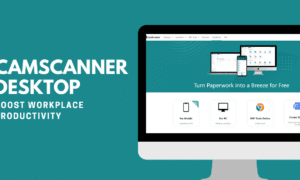Avitesh Kesharwani is a highly accomplished Senior Principal Consultant and Engineering Leader with over 11 years of experience in software architecture, cloud transformation, and enterprise AI integration. Throughout his career, he has demonstrated a strong ability to design, modernize, and scale mission-critical systems that align with evolving business needs, particularly within the banking, insurance, and fintech sectors.
Beyond his cloud transformation work, Avitesh is recognized as a front-runner in the application of Artificial Intelligence to enterprise solutions. His work focuses not just on technological migrations, but on strategically embedding AI to enhance system resilience, automate operations, and unlock new efficiencies. He has been instrumental in developing AI-augmented frameworks that enable organizations to not only move to the cloud but also leverage predictive analytics, self-healing systems, and smarter cost management practices.
One area where Avitesh has dedicated significant research and practical efforts is cloud migration with minimal code changes — a critical need for enterprises seeking to innovate without disrupting their core operations. With the rising adoption of cloud platforms like Azure, AWS, and Google Cloud, and the increasing integration of AI-driven services, many businesses face the challenge of balancing modernization speed with cost, risk, and technical debt.
Traditionally, cloud migration has often been synonymous with complete rewrites and expensive transformations. However, Avitesh’s research presents an alternative — a strategic, data-driven framework that allows companies to move to the cloud faster and smarter without massive reengineering. His approach focuses on categorizing applications, minimizing intervention, and iteratively optimizing post-migration using AI tools to monitor, predict, and continuously enhance system performance.
Get ready to dive into the exciting world of strategic cloud transformations with one of the industry’s leading voices in enterprise modernization and AI integration — Avitesh Kesharwani!
In this interview, we’ll gain invaluable insights into how enterprises can rethink their cloud journey to reduce disruption, control costs, embrace AI-driven operations, and maximize long-term agility. With Avitesh’s unmatched expertise, he is the perfect guide to lead us through this crucial aspect of digital evolution.

Avitesh Kesharwani
Avitesh, congratulations on your latest research publication! Can you tell us what inspired you to focus on the topic of cloud migration with minimal code changes?
Thank you! The inspiration came from real-world pain points I observed during my years leading cloud transformation projects for large enterprises. Many organizations wanted the benefits of cloud scalability and AI integration but were hesitant due to the complexity and cost of re-architecting legacy applications. I realized there was a pressing need for a structured, strategic approach that could accelerate migration while preserving business continuity and preparing the groundwork for AI-enhanced operations.
Your paper introduces a “Strategic Cloud Migration Framework.” Can you briefly describe its core components?
Absolutely. The framework is built on three pillars: Application Categorization, Minimal Intervention Strategy, and Post-Migration Optimization. Each pillar ensures enterprises prioritize applications smartly, move with minimal disruption, and evolve with AI-augmented optimization tools post-migration.
What are some common mistakes companies make when attempting large-scale cloud migrations?
One of the biggest mistakes is attempting massive rewrites for every system all at once. This often leads to budget overruns, fatigue, and stalled initiatives. Another pitfall is overlooking the value of integrating observability and predictive analytics early — without AI insights, post-migration performance issues often get detected too late.
How does your framework balance speed with long-term maintainability, especially in light of AI’s growing role?
Speed and sustainability are both critical. Our minimal-change-first approach ensures quick wins by getting applications to the cloud with minimal disruption. Meanwhile, by integrating AI-driven monitoring and optimization tools after migration, organizations can ensure that their systems continuously improve and adapt without manual overhead.
How do you see the role of hybrid cloud strategies evolving in large enterprises?
Hybrid cloud is no longer just a transitional phase — it’s becoming a deliberate, long-term strategy for many enterprises. Especially in regulated sectors like banking and healthcare, not every workload can move fully to public cloud due to compliance, data residency, or latency requirements.
In one project I led for a financial institution, we designed a hybrid architecture where sensitive transaction data remained on a private cloud while customer-facing applications scaled dynamically on public cloud platforms. We also integrated AI-driven orchestration to manage traffic intelligently between environments based on workload sensitivity and real-time system health.
Hybrid strategies give organizations the best of both worlds — security and compliance control, plus the agility and innovation speed of public cloud services. The future is about seamless orchestration across environments, and AI will play a huge role in making that seamless and autonomous.
How can AI help optimize cloud costs after migration?
Post-migration, one of the biggest challenges enterprises face is cloud sprawl — unexpected cost overruns because resources are over-provisioned or under-utilized. This is where AI shines.
During a cloud modernization project for a mid-sized bank, we implemented AI-powered cost optimization tools that continuously analyzed usage patterns. The system could automatically recommend instance right-sizing, idle resource shutdowns, and even negotiate reserved instance commitments based on predictive usage forecasts.
Without AI, cost optimization tends to be reactive — only catching problems after a shocking monthly bill. With AI, optimization becomes proactive and dynamic. Enterprises can achieve significant savings (often 20-30%) without manual intervention, making their cloud investments far more sustainable.
In my view, cost optimization through AI isn’t optional anymore — it’s critical for any organization that wants to scale responsibly.
Any advice for enterprises embarking on their cloud journey in 2025 and beyond?
Start with clarity on business goals. Adopt a phased strategy and make AI readiness a foundational aspect of your migration plan — not an afterthought. With AI rapidly advancing, cloud environments that are AI-optimized from day one will be better positioned to scale, innovate, and outperform competitors.
Where can readers learn more about your work?
You can read my full research paper, ‘Strategic Framework for Large-Scale Cloud Migration with Minimal Code Changes,’ published in the Journal of Computer Science and Technology here: http://article.sapub.org/10.5923.j.computer.20251501.03.html. I also actively share insights on my LinkedIn profile: https://www.linkedin.com/in/itsavitesh/


































